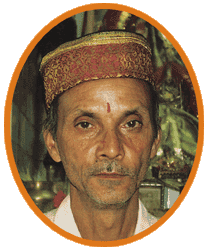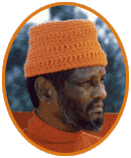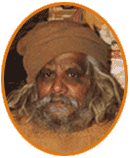
|
Shankaracharya has worked closely with Ramesh Moudgil since 1981. Ramesh is a master in a long line of Shakta Adepts who has recited the Chandi (sacred Mother text) and worshiped Durga Pararoop since his youth. He does daily Shri Chakra worship and serves hundreds of devotees. In 1998 Ramesh passed the supreme Guru mantra given to the successor of his lineage to Shankaracharya. Ramesh has two main Gurus, Hari Swarup Brahmachari and Bhagawan Das Acharya (1008). Hari Swarup is not only a Saint in a long line of Shakta Gurus but also a disciple of Ishwar Swarup Brahmachari (Lakshman Joo), the great Kashmiri Shaivite Saint whose lineage goes directly back to the immortal Sage Abinavagupta himself. Bhagawan Das is a disciple of Devhara Baba, the ageless master Yogi of India. |
 |
 |
 |
|
Shankaracharya was fortunate to have spent considerable time with the great Siddha Saints Baba Muktananda and Dhyanyogi Madhusudandas. These Saints both prophesied his future as a Guru and gave their blessings to his upcoming spiritual work. In 1977, at his last darshan with Baba Muktananda, Baba told him that his future was bright, that he would run a large ashram and take many people across the sea (of samsara). Baba then gave him a pair of blessed sandals. Similarly, in 1981 after Shankaracharya's realization, Dhyanyogi told him that he should trust his realization and that his blessings would stand behind the seed mantra he was giving, his ashram and all his future disciples. Swami Madhavananda was considered by many to be a Siddha Saint of the highest order. He lived in a cave for over 30 years, spending the majority of the day in meditation. He was considered to be a rare manifestation of God, as was his Guru, Bhagawan Nityananda. The Swami was a friend of Shankaracharya's and gave abundant blessings and instruction regarding his work in the West. Finally, in 1981, when the Divine Mother Herself appeared to Shankaracharya, She appeared in the forms of all his Gurus, his own form, and then as the formless Shakti Itself. She said, "Take My Teachings to the West." |
|
|
|
|
|
|
|
|
|
|
|
|
|
|
|
|
|
|
|